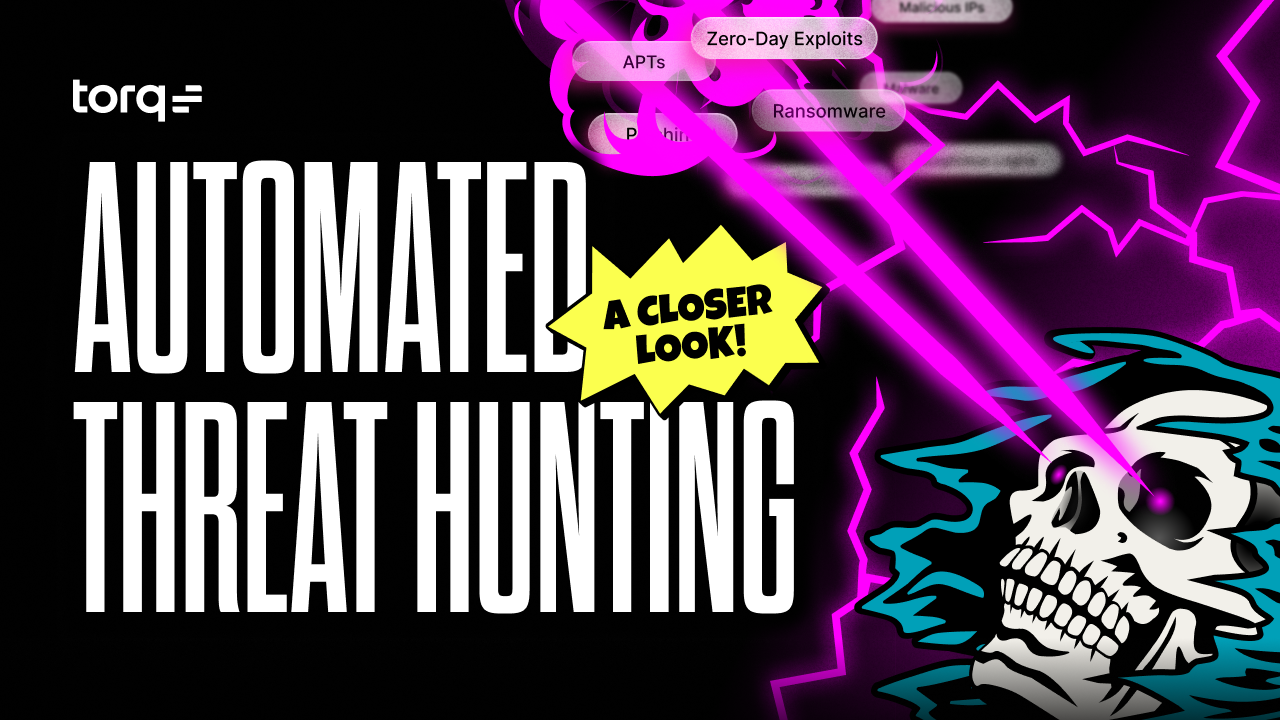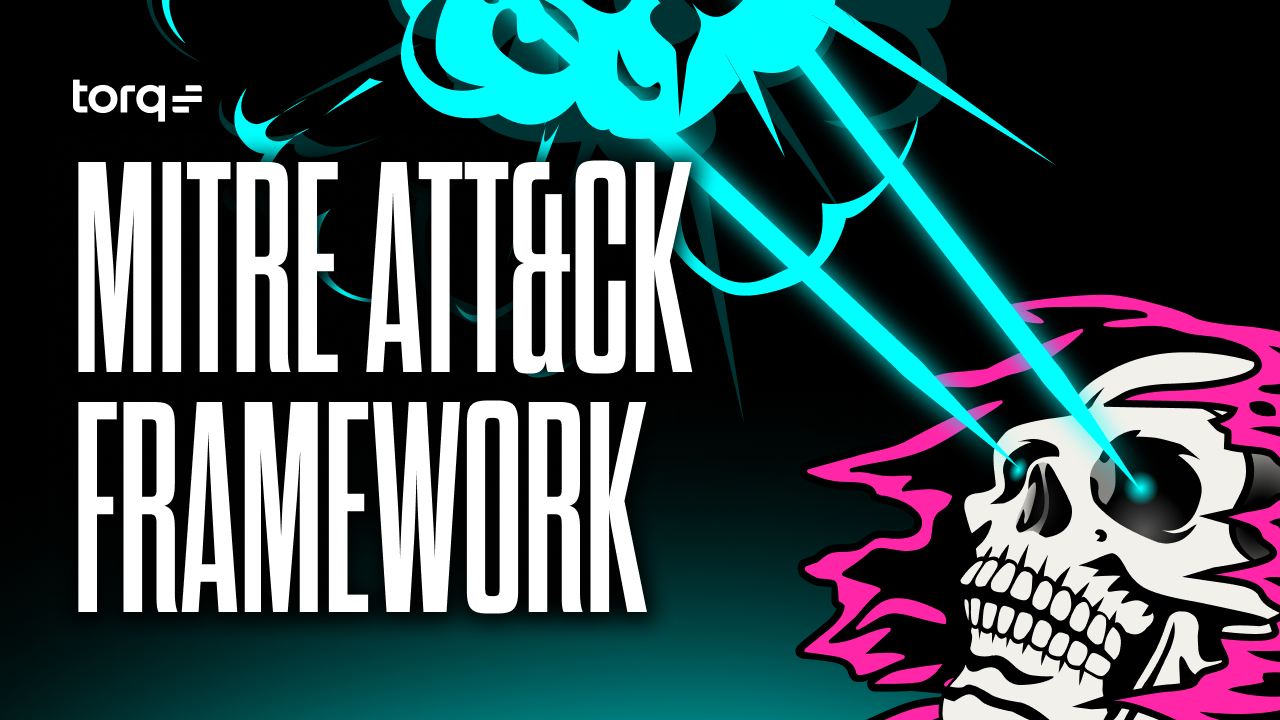Contents
Modern threats don’t come crashing through the front door — they slip quietly through gaps in the side of your house that your legacy tools don’t even know exist. Automated threat hunting is how you find threats before they find your sensitive data.
Automated Threat Hunting Overview
Automated threat hunting uses rule-based logic, AI, automation, and real-time telemetry to identify suspicious behaviors across your environment. While manual threat hunting is resource-intensive and dependent on expertise, automation levels the playing field.
With Hyperautomation tools, security teams can automate detection queries, enrich findings with threat intelligence, trigger searches across systems, and initiate immediate responses.
Automated threat hunting enables your SOC to:
- Continuously monitor and detect threats at scale
- Investigate faster and cut root cause analysis time in half
- Shrink time from detection to response (MTTR)
- Apply proven threat hunting strategies automatically
- Handle multiple threat hunting sessions simultaneously
- Give your analysts time back
What is automated threat hunting?
Automated threat hunting is the practice of using automation and AI to continuously search for hidden threats across an organization’s environment. Unlike traditional reactive monitoring, threat hunting is proactive, and when automated, it removes the bottlenecks of manual investigation, helping decrease a potential threat’s “exposure window”.
Let’s break down five ways to automate threat hunting in your SOC.
1. Automate EDR, XDR, SIEM, and Anomaly Detection Queries
Your stack is loaded with tools. Torq seamlessly integrates your stack to make them work together. When EDR, XDR, SIEM, and anomaly detection platforms are paired with automation, these tools can detect threats and act on them.
With threat hunting automation, you can:
- Trigger a SIEM alert to automatically query EDR logs
- Parse XDR telemetry to extract IOCs and enrich investigations
- Respond to anomaly detection with distributed searches across email, cloud, identity, and endpoint logs
2. Share and Standardize Threat Hunting Templates
Every SOC team uses custom automation templates, which are shared with team members to ensure the most efficient threat hunting workflows. These threat hunting templates serve as playbooks for automating investigations received from the SIEM/EDR/XDR queries.
Teams can:
- Standardize how alerts are prioritized and triaged
- Automatically detonate suspicious files in sandboxes
- Use natural language prompts to build or modify workflows
This makes threat hunting more accessible, scalable, and consistent. Now, even junior analysts can execute expert-level investigations.
3. Trigger Search Processes With Workflows
Manual searching is slow. Automated workflows can activate search processes across various systems to identify further events and evidence.
These workflows can:
- Trigger endpoint and log searches across EDR, MDM, and SIEM platforms
- Perform cross-system correlation to identify lateral movement
- Enrich alert data using threat intelligence and vulnerability scanners
This reduces the time analysts spend manually digging through data, allowing them to focus on high-value tasks.
4. Use Playbooks for Automated Incident Response
Threat hunting without response is just research. Turn detection into action with instant, automated incident response.
Build workflows to:
- Isolate compromised systems
- Revoke access or reset credentials
- Trigger notification workflows to stakeholders
- Update case management systems
5. Automate Threat Remediation
Once a threat is confirmed, it’s go time. Depending on the threat, workflows may automate remediation by:
- Quarantining compromised files using EDR
- Removing malware from cloud storage or inboxes
- Blocking malicious IPs and updating firewall rules
- Rolling back affected systems from backups
Automated Threat Hunting with Torq
With Torq, threat hunting can be fully automated with our AI-driven Hyperautomation platform. Here’s how we do it:
- Automated Case Management: Torq Hyperautomates case management by automatically creating, updating, and managing cases in response to incoming alerts. High-fidelity signals get prioritized instantly, and cases are enriched in real-time with contextual data from across your stack.
- Observables: Observables like IPs, hashes, URLs, and domains are more than just data points. They’re trackable objects tied directly to cases and alerts, fully compliant with OCSF standards. This lets security teams link activity across seemingly unrelated investigations and surface patterns faster than ever before.
- Relationship Tracking: Torq’s platform allows security teams to implement correlation, enrichment, and contextualization logics in their workflows, leveraging the relationships between observables, cases, and alerts. This helps security analysts identify patterns and uncover hidden threats.
As cyberattacks grow more advanced, real-time visibility and rapid response aren’t optional — they’re essential. Automated threat hunting enables SecOps teams to stay proactive, reduce alert overload, and handle complex multi-vector attacks faster.
Torq gives security professionals the automation edge they need to hunt smarter, not harder. See how Torq can elevate your automated threat hunting strategy today.




